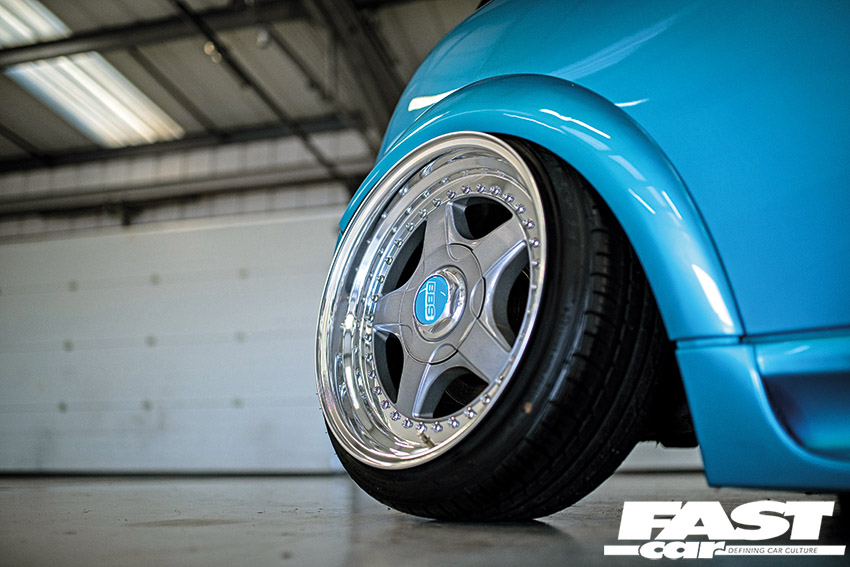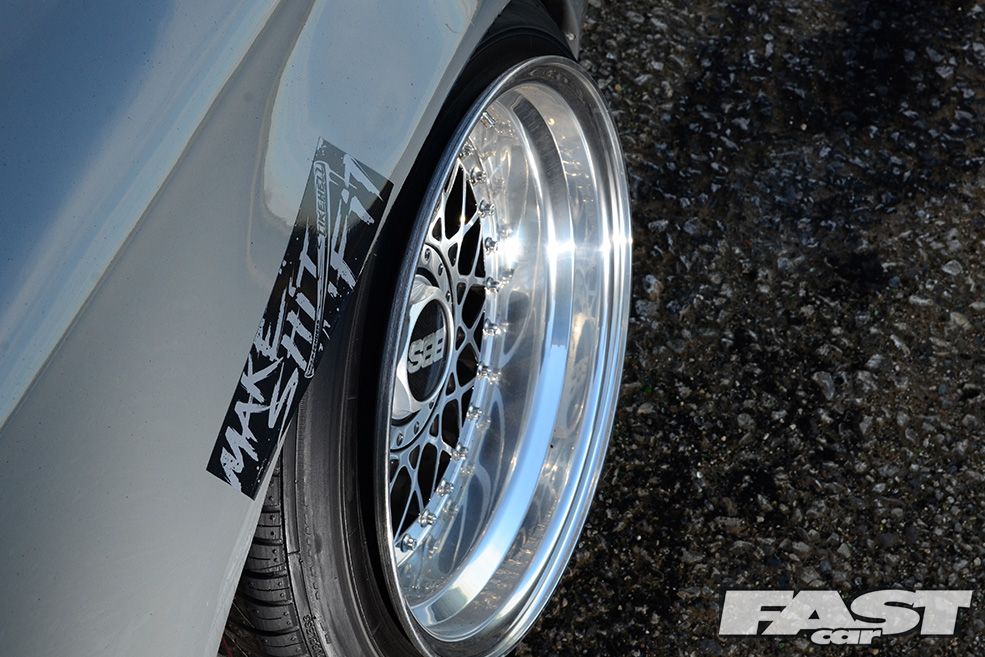Tire stretching is the practice of fitting narrower tires onto wider wheels, resulting in a stretched appearance. It can provide a unique look and allow for an even lower ride height without tires rubbing the fenders. However, the legality and safety implications vary depending on local laws and regulations.
When it comes to modifying a car, one trend that has gained popularity over the years is tire stretching. This practice involves fitting narrower tires onto wider wheels, resulting in a stretched appearance. While some car enthusiasts love the aggressive and unique look they provide, others question its legality and safety.
Understanding Stretched Tires
The process includes mounting narrower-width tires onto a wheel designed to accept a wider tire. Essentially, it’s like putting a size 8 shoe onto a size 10 foot. This process results in the tire sidewall extending beyond the wheel rim, creating a stretched look.
Car enthusiasts prefer narrower tires on wider wheels for various reasons. The most common one is aesthetics. Stretching tires can give a vehicle a more aggressive, stanced appearance by reducing the amount of sidewall between the wheel and the fender.
What’s The Purpose?
Car owners in the stance and fitment scene often associate the mod with aiming to achieve a specific aesthetic by pushing the limits of tire size and fitment. Running narrower tires can allow for a lower ride height, which enhances the overall look of the vehicle. This method is used to achieve a flush fitment, with the wheel appearing more prominent in the wheel well.
In addition, it also allows the fitting of wider wheel rims for an even more aggressive look. By fitting a narrower tire, you stretch the tire sidewall, and in some cases, this can provide the clearance required to use a much wider wheel without the tire rubbing on the bodywork.
Are Stretched Tires Legal?
The legality of tire stretching is a subject of debate among car enthusiasts and authorities. Various arguments both for and against exist, and regulations regarding their usage differ from state to state and country to country.
The argument against
Those against, argue that the tires are not within the manufacturer’s recommended specifications. Tire manufacturers design their products to fit specific widths of rims, and expanding beyond these tolerances could void the warranty and potentially affect the speed ratings, which are often lower than those of correctly fitted tires. The load-bearing walls of tires are designed to be at around a 90-degree tangent to the rim’s edge, allowing for some vertical flex during cornering for better grip and handling. Spreading tires beyond these parameters can subject them to additional stress and strain, increasing the risk of failure and inducing adverse handling effects.
On top of that, critics say that incorrectly sized tires are more likely to pop away from the bead when tire pressures drop below the recommended level. The wear pattern of narrow tires on wider wheels during heavy driving can be significantly different from that of standard tires, with increased edge wear. The narrower width of stretched tires may also reduce grip and traction.
But are stretched tires really that bad?
On the other hand, some argue that modern tires – especially low-profile ones and run-flats- have thicker side walls and can handle the extra loads associated. As long as tire pressures are properly maintained, the risk of tire failure or detachment from the rim during cornering is minimal. Those who fit stretched tires often run them at higher pressures compared to conventionally fitted tires. Many car owners have been running this mod without encountering any significant problems.
What does the law say?
There is no specific legislation directly addressing the legality of stretched tires in the US or the UK. At the time of writing, tests do not have specific guidelines on tire sizes.
However, while the lack of explicit regulations might imply that stretched tires are legal, that might not be the case. State vehicle codes or regulations cover laws and regulations regarding vehicle modifications, including tire size and fitment. In Britain, authorities can still impose penalties or warnings using certain sections of ‘The Road Vehicles (Construction and Use)’ regulations.
Also, insurance companies may have reservations about covering vehicles with modifications, including stretched tires. If an accident occurs and investigators can establish that the stretched tire played a role in the incident, it may raise questions about maintenance and vehicle roadworthiness, potentially impacting insurance coverage.
So, should I run stretched tires or not?
Tire stretching is a subject that provokes varying opinions among car enthusiasts. It can offer unique styling and potentially allow for an even more aggressive ride height setting. But it is important to consider the legality, safety implications, and potential negative effects too.
Be sure to do your research. Ask yourself if the pros outweigh the cons, and consider all your options before making a decision.







